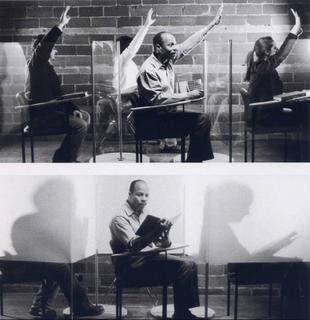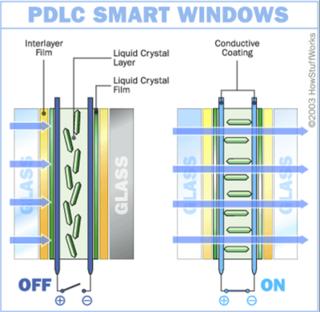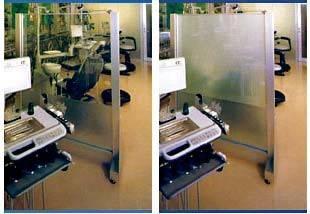
In the classroom setting , my interests involve studying 1.) The blurring of the categories of seating/flooring, fixtures/wall surfaces and information services/ceiling plane, 2.) The school classroom model in reference to modulized component customization of the lesson plan at the classroom desk, and, 3) Resplendent surfaces as an effective means to help them maintain attention and opaqued and transparent planes in the learning environment to create privacy configurations (and, most importantly, how to allow for student control of the learning environment).
In regards the privacy planes, Polymer Dispersed Liquid Crystal Devices have been used for a few years in the architectural applications. These 'Smart' Window applications where convenient for exterior glazing where shading was required ( in two modes- shaded and unshaded) . Liquid crystals at the core of the material react to an electrical charge by aligning parallel. When the electrical charge is absent, the liquid crystals in the center orient randomly. The eye perceives the direct light transmission as transparency; blocked light as opaqueness. Even some interior products have been developed for mobile screening.
Below, a privacy Screen product is easily, quickly and remotely activated. How can this be adapted for the classroom situation, as shown conceptually above? What existing technologies can accomplish the same requirements? When does the use of this smart material become didactic? -Mikael Powell


No comments:
Post a Comment